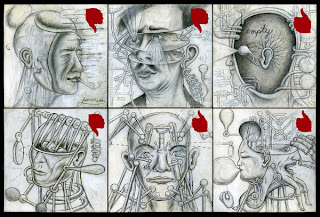 |
| Thinking Clearly About Personality Disorders |
SEOOKE.com: This weekend the Board of Trustees of the American Psychiatric Association
will vote on whether to adopt a new diagnostic system for some of the most
serious, and striking, syndromes in medicine: personality disorders.
Personality disorders occupy a troublesome niche in psychiatry.
The 10 recognized syndromes are fairly well represented on the self-help
shelves of bookstores and include such well-known types as narcissistic
personality disorder, avoidant personality disorder, as well as dependent and
histrionic personalities.
But when full-blown, the disorders are difficult to
characterize and treat, and doctors seldom do careful evaluations, missing or
downplaying behavior patterns that underlie problems like depression and
anxiety in millions of people.
The new proposal — part of the psychiatric
association’s effort of many years to update its influential diagnostic manual
— is intended to clarify these diagnoses and better integrate them into
clinical practice, to extend and improve treatment. The entire exercise has
forced psychiatrists to confront one of the field’s most elementary, yet still
unresolved, questions: What, exactly, is a personality problem?
Habits of Thought
Personality problems aren’t exactly new or hidden. They
play out in Greek mythology, from Narcissus to the sadistic Ares. They
percolate through biblical stories of madmen, compulsives and charismatics. They
are writ large across the 20th century, with its rogues’ gallery of
vainglorious, murderous dictators.
Yet it turns out that producing precise, lasting
definitions of extreme behavior patterns is exhausting work. It took more than
a decade of observing patients before the German psychiatrist Emil Kraepelin
could draw a clear line between psychotic disorders, like schizophrenia, and
mood problems, like depression or bipolar disorder.
Likewise, Freud spent years formulating his theories on
the origins of neurotic syndromes. And Freudian analysts were largely the ones
who, in the early decades of the last century, described people with the sort
of “confounded identities” that are now considered personality disorders.
Their problems were not periodic symptoms, like
moodiness or panic attacks, but issues rooted in longstanding habits of thought
and feeling — in who they were.
“A pedantic sense of order is typical of the compulsive
character,” wrote the Freudian analyst Wilhelm Reich in his 1933 book, “Character
Analysis,” a groundbreaking text. “In both big and small things, he lives his
life according to a preconceived, irrevocable pattern.”
Others coalesced too, most recognizable as extreme
forms of everyday types: the narcissist, with his fragile, grandiose
self-approval; the dependent, with her smothering clinginess; the histrionic,
always in the thick of some drama, desperate to be the center of attention.
In the late 1970s, Ted Millon, scientific director of
the Institute for Advanced Studies in Personology and Psychopathology, pulled
together the bulk of the work on personality disorders, most of it descriptive,
and turned it into a set of 10 standardized types for the American Psychiatric
Association’s third diagnostic manual. Published in 1980, it is a best seller
among mental health workers worldwide.
These diagnostic criteria held up well for years and
led to improved treatments for some people, like those with borderline
personality disorder. Borderline is characterized by an extreme neediness and
urges to harm oneself, often including thoughts of suicide. Many who seek help
for depression also turn out to have borderline patterns, making their mood
problems resistant to the usual therapies, like antidepressant drugs.
Today there are several approaches that can relieve
borderline symptoms and one that, in numerous studies, has reduced
hospitalizations and helped aid recovery: dialectical behavior therapy.
This progress notwithstanding, many in the field began
to argue that the diagnostic catalog needed a rewrite. For one thing, some of
the categories overlapped, and troubled people often got two or more
personality diagnoses. “Personality Disorder-Not Otherwise Specified,” a
catchall label meaning little more than “this person has problems” became the
most common of the diagnoses.
The assessment interviews can last hours, and
treatments for most of the disorders involve longer-term, specialized talk
therapy.
Resisting Simplification
The most central, memorable, and knowable element of
any person — personality — still defies any consensus.
A team of experts appointed by the psychiatric
association has worked for more than five years to find some unifying system of
diagnosis for personality problems.
The panel proposed a system based in part on a failure
to “develop a coherent sense of self or identity.” Later, the experts tied
elements of the disorders to distortions in basic traits.[nyt]




Post a Comment
1. Silahkan anda berkomentar dengan baik dan sopan.
2. Komentar yang anda berikan akan menjadi kemajuan blog ini.
3. Bagi yang mencari backlink silahkan komentarlah dan jangan spam..
4. Ada pertanyaan silahkan hubungi kami secara private.
5. Terima kasih atas kunjungannya.